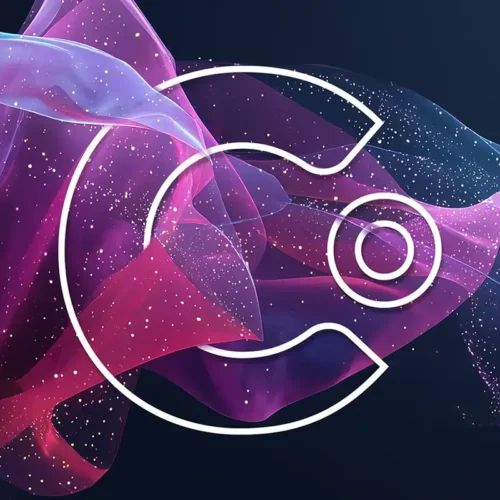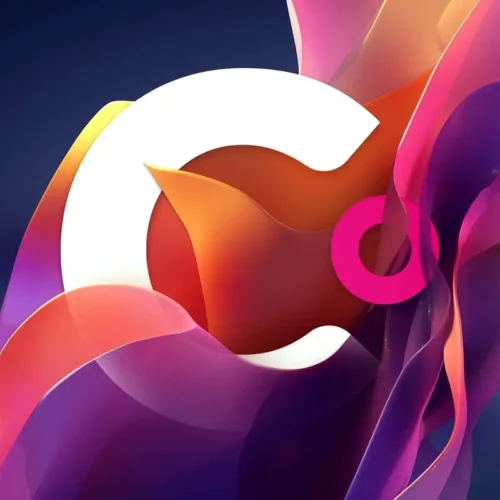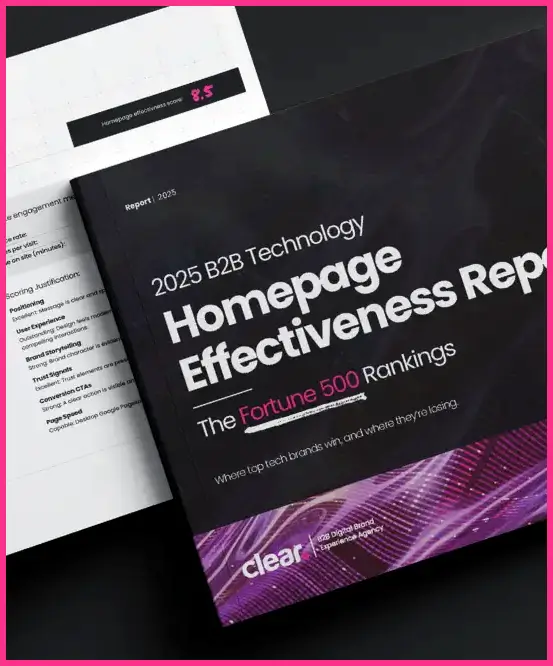I use AI for speed, scale, and structure, but not for strategy or soul.
Natalio Villanueva, Marketing & Content Specialist
For B2B marketers, AI tools are transforming the way we plan and produce content. Budget uncertainty means we’re all under pressure to do more with less, and AI seems like the obvious solution. But how do you know when to automate and when you need human insight? What are the risks of using AI-generated content? And how can you most effectively integrate AI into your content workflow?
Answering all of these questions is crucial to preserving authenticity, brand voice, and strategic alignment in your content. We asked leading B2B marketers when and where they’re using AI tools to increase speed and efficiency and how they’re balancing automation with human creativity to keep content on-brand and impactful. Here’s what we heard.
You’re not imagining it—AI is everywhere
With AI bringing speed and efficiency to everything from ideation to SEO, it’s no surprise that three out of five marketers are using it to save time and resources. However, if you’re thinking you can just hand over your B2B marketing to an AI tool and be done with it, think again.
Without a thoughtful approach, AI content creation can result in content that’s generic and forgettable, which dilutes your brand message. As use of AI tools like ChatGPT, Claude, and Gemini for B2B marketing content continues to grow and spread, making sure your content includes a unique perspective is essential to making it stand out.
In a saturated digital landscape, generating content that packs a punch is a must.
Where AI adds real value in B2B content strategy
The trick to turbocharging your B2B content strategy is knowing when to use AI, and when not to. Just like your best employees, leaning into its strength will produce the best results.
AI excels at accelerating the early stages of content development — things that take a lot of time for people to do, like keyword research, topic ideation, and even optimizing SEO structure. For example, AI can categorize keywords by user intent, group ranking keywords into key themes, or structure content for readability, all of which boost SEO performance.
If you’re stuck for ideas completely, AI can help your team get past the “blank page” problem and generate scalable content frameworks, fast. It’s also useful for ramping up output. Try feeding existing content into an AI tool like ChatGPT and asking it to repurpose the piece into multiple formats — such as turning a white paper into an infographic and a blog post, for example.
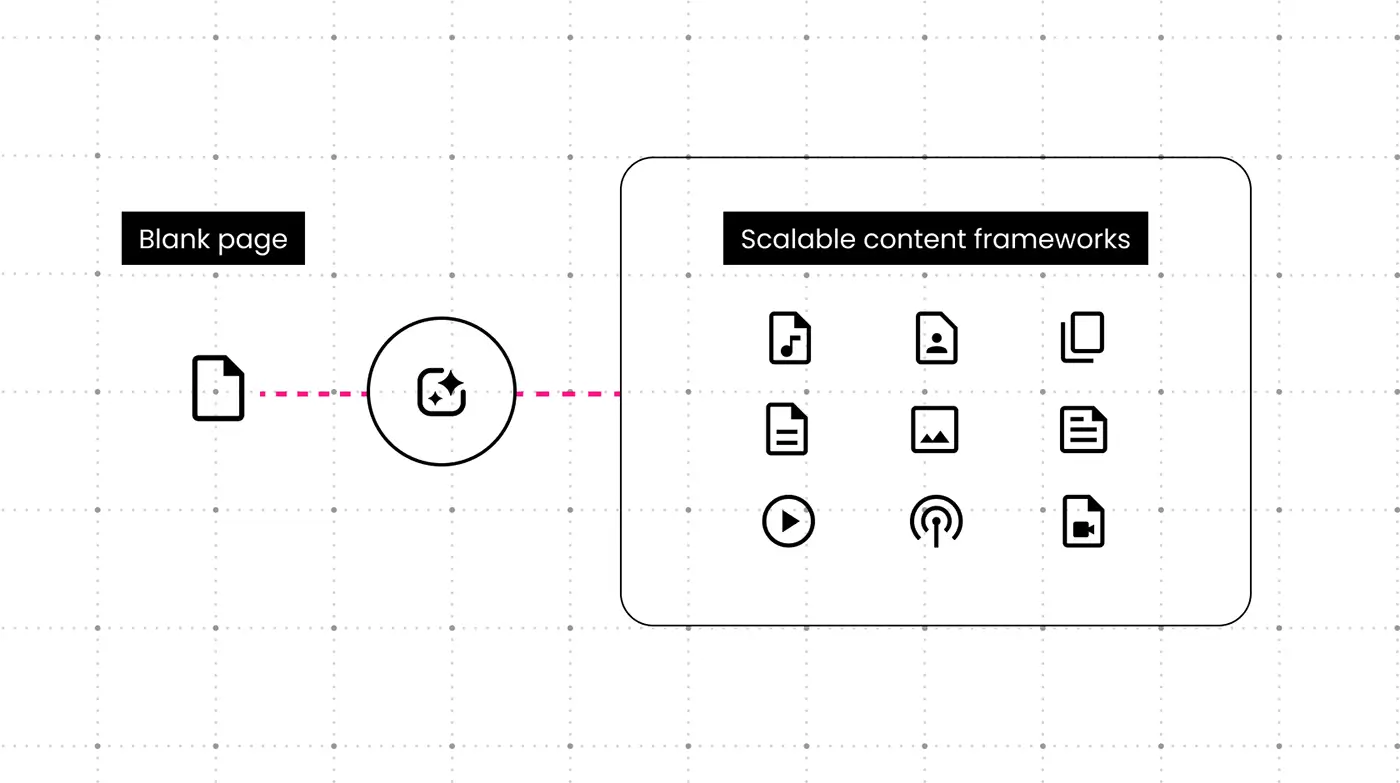
With well-tuned prompting, which requires lots of practice plus deep understanding of the subject matter, AI tools can help you draft outlines faster so you can lead better. And AI is great at analyzing data to identify performance patterns, which you can use to fine tune your content strategy more precisely to your audience’s interests and needs. But as one marketer told us, AI lacks details and instinct, creative originality, and emotional judgment. That’s why you always need a human at the helm.
For strategy, voice, and emotional impact, turn to humans
Effective B2B content requires extensive and nuanced understanding of customer pain points, competitive positioning, and strategic goals—all areas where AI falls short. Content that is AI-generated and untouched by humans doesn’t tend to perform well, because it lacks the emotional understanding that creates a real connection, and that only people can provide.
While AI can mimic patterns, it can’t replicate the instincts, emotional intelligence, or brand nuance that you get from content leaders.
To avoid pushing out content that sounds bland or out of step with your brand and audience, you need editors and strategists in the equation. Don’t look to AI to shape narratives or make judgment calls. Bring it in for consistency and scalability, but keep people involved to shape both the inputs and the outputs. A human touch is essential to ensure content feels relevant, original, and authentic.
Hybrid workflows are the future of scalable, strategic B2B content
To successfully integrate AI into your B2B content marketing strategy, you have to find the right balance between machine efficiency and human creativity. The most effective content teams are building a repeatable, hybrid workflow that blends the best of both worlds, pairing AI for speed with humans for quality.
For example, you might use AI to draft an outline, a strategist to shape the angle, and an editor to refine the voice and tone. Developing a custom GPT trained on your brand style can also help keep AI-generated content on-brand. Another approach is to upload your brand style guide into an AI tool and train it that way.
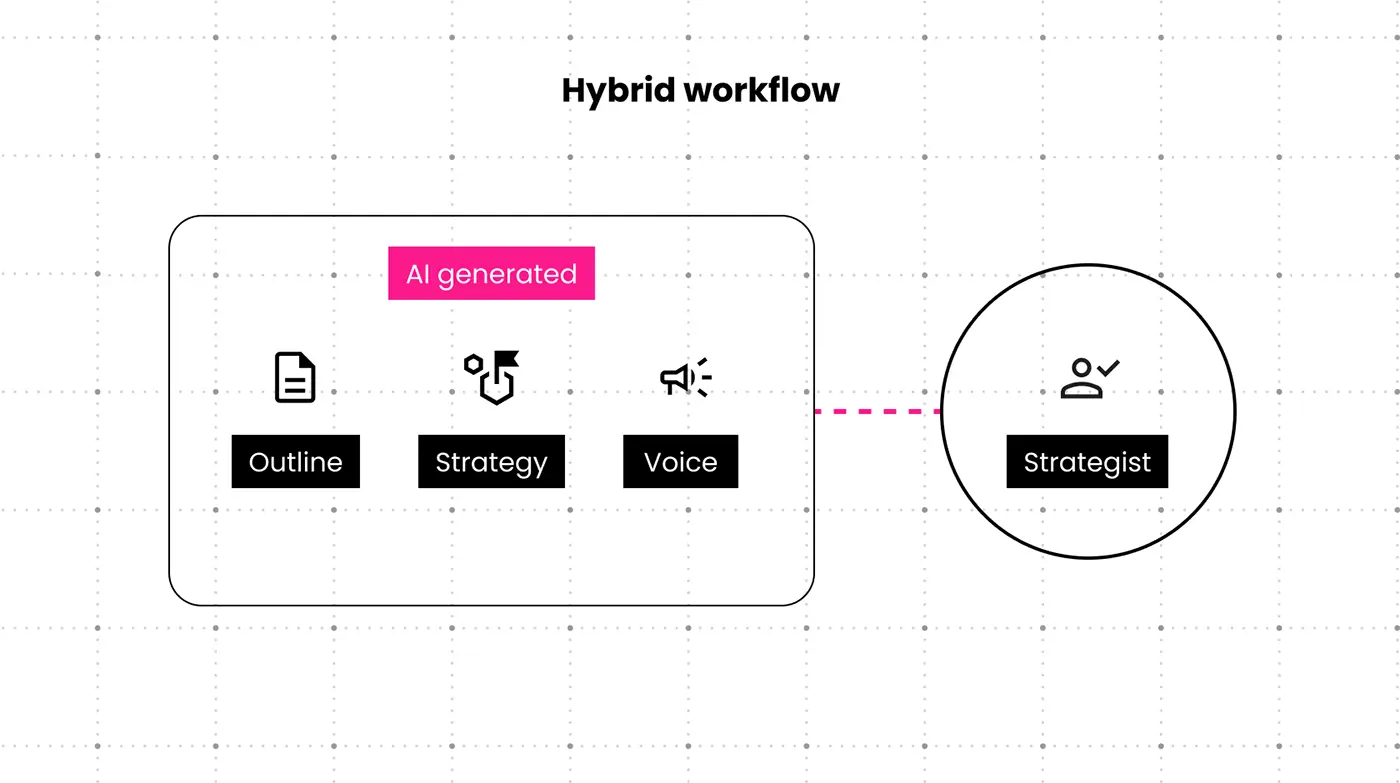
Again, actual people should review any content that’s created using AI. Establish clear approval workflows to ensure it gets seen by the right eyes, and given a human touch before you push it out into the world. By blending artificial and emotional intelligence, you can accelerate your outputs without sacrificing authenticity.
We’re just beginning to uncover the possibilities of AI, so don’t be afraid to think outside the box. For example, Balkees Jbair, CMO and business analyst at Assertant, told us she uses AI to rephrase or clarify questions for internal product and dev teams when collaborating on technical content.
John Greely, VP of marketing at Navu, takes the questions users ask the AI chat tool on the company website to identify content gaps and guide strategy. “If a user asks something and doesn’t get a satisfactory response, I know I need to create content to address that gap,” he explains. “And if I find topics coming up frequently, that’s a pretty strong signal about what I should be featuring more on the site.”
The key is strategic intent—not using AI to replace your team, but rather to elevate their capabilities and free up their time to focus on higher-value work.
Key takeaways & next steps
AI offers invaluable benefits in terms of increasing your B2B content marketing team’s efficiency accelerating timelines. To set creative teams up for success and avoid common pitfalls, follow these best practices:
- Develop clear guidelines for using AI tools – Decide which tasks can be outsourced to an AI tool and which should be kept with people to ensure authenticity and originality. Make sure everyone on your team is aware and on board.
- Create approval workflows as guardrails – Give anyone using AI tools as for content strategy or creation a clear approval process to follow before publication. This should include having subject matter experts review relevant content—especially if it’s technical. Keep humans in the loop to keep content on-brand and accurate.
- Invest in both AI literacy and creative skills development – We’ve said it before and we’ll say it again: the goal should be to augment your best people with AI tools, not replace them. Invest time into improving both sides of the coin—using AI tools to produce the best possible outputs, and continuing to get better at the things AI can’t do.
A strategic partner with AI expertise + deep B2B insight
If you’re looking to accelerate and advance your B2B content strategy with AI, the Clear Digital team can help. We’ve been experimenting with AI tools for years and have both the technical chops and the strategic know-how to help your company kick your content output into overdrive—without watering it down. Let’s talk about how you can balance AI automation with brand voice to maximize your impact on any B2B marketing budget.



